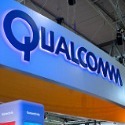Qualcomm hopes to lead 5G pivot into metaverse
Qualcomm, one of the primary companies driving the development of 5G technologies, believes the metaverse 'has the potential to be the next computing platform.'

Qualcomm has long been a major technology supplier to mobile network operators. From CDMA to 5G, the company's patents and silicon have helped to brace significant portions of the world's wireless infrastructure for years.
And now Qualcomm is hoping that the metaverse turns into the next big thing.
The metaverse "has the potential to be the next computing platform," Qualcomm's new CEO Cristiano Amon said Tuesday during his company's investor event. He suggested that the metaverse opportunity could even grow as big as the smartphone industry is today.
Also: "If you're going to spend time in the metaverse, Snapdragon [Qualcomm's chipset platform] is going to be your ticket to the metaverse," Amon added.
Amon's comments – and Qualcomm's broader interest in the metaverse – come as no surprise. Large sections of the tech and entertainment industries – from Disney to Facebook, er, Meta – are increasingly leaning toward the concept of a metaverse. After all, if large chunks of the world's population do end up living significant portions of their lives inside virtual, "metaverse" spaces, they probably will be amenable to spending money on the experience.
Qualcomm isn't even the only telecom company eying the concept of the metaverse. "The metaverse is our future business model. It will be our core business platform," Cho Ik-hwan, SK Telecom's vice president and head of mixed reality development, told Bloomberg recently.
A message of diversification
But Amon's interest in the metaverse is noteworthy because it coincides with Qualcomm's ongoing attempts to expand beyond its core focus on smartphones and 5G. And that's happening at a time when investors appear to have become frustrated with the falling share prices of 5G providers like Verizon and T-Mobile. The situation is becoming such a concern that some carrier executives have been shown the door.
"We're truly diversifying," Amon said of Qualcomm. "We're no longer defined by a single end market and a single customer relationship."
Mobile remains a big part of the company's business, Amon said, but: "There's more to Qualcomm."
Broadly, Amon argued that Qualcomm will continue to focus on developing technology and silicon for high-end smartphones, but will leverage that research and development work to also sell products into a wide variety of other industries, ranging from robots to automobiles to laptops.
And "XR" devices – those sporting augmented and virtual reality capabilities – represent one big category of devices on which Qualcomm is betting. Amon made sure to point out that Qualcomm's Snapdragon silicon powers the new Oculus headset from Facebook, a company so sure the metaverse will be a "thing" that it rebranded itself as "Meta."
Qualcomm is putting the metaverse and its associated headsets into its IoT business segment, next to its products for drones, wearables, smart city operations, industrial sensors and other gadgets. And that's still a relatively small business compared with Qualcomm's massive smartphone division.
But Qualcomm's desire to move beyond smartphones and 5G is clear.
"We have an incredible opportunity to grow," Amon said, arguing that a wide variety of trends, ranging from edge computing to artificial intelligence, would drive demand for the company's silicon designs that support inexpensive, low-powered computing connectivity. He said that Qualcomm's overall addressable market will grow by seven times due to those efforts, eventually representing a $700 billion opportunity.
"Virtually all roads lead to Qualcomm," Amon assured investors.
Related posts:
— Mike Dano, Editorial Director, 5G & Mobile Strategies, Light Reading | @mikeddano
About the Author(s)
You May Also Like




.jpg?width=300&auto=webp&quality=80&disable=upscale)







